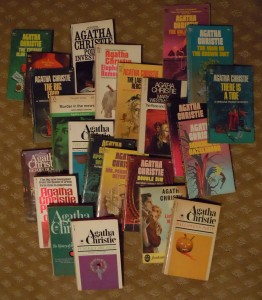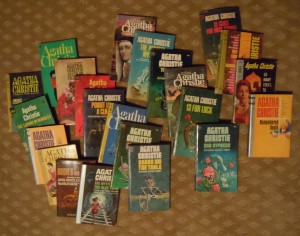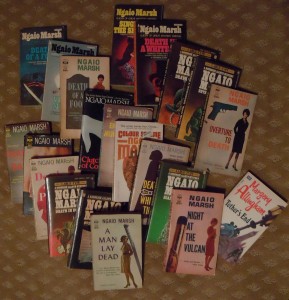-
Full Dark House
- by Christopher Fowler
- TPB, Bantam Books, © 2003, 349 pp, ISBN978-0-553-38553-3
I picked up this mystery – the first in a series – because of its core hook: In the present day (around 2003, when the book was published, I guess), a bomb goes off in London destroying the headquarters of the Peculiar Crimes Unit, and its key investigator, Arthur Bryant. His partner, John May, is left to find out who killed him, and finds that Bryant was researching his memoirs and had recently been looking into the details of their first case together. The majority of the book chronicles that first case, when May first joined the unit and the pair searched for a killer at the Palace Theatre during the Blitz, at the end of 1940.
The story chronicles the assembly of the Peculiar Crimes Unit at a time when most able-bodied young men are fighting in World War II, and with some opposition from the police leadership. Bryant and May are introduced to the theater life and investigate the murders of several performers in a soon-to-open run of Orpheus in the Underworld. While the book features some detective work and some action, it’s at its best when it’s chronicling life during the Blitz, and in introducing us to the characters of Bryant and May.
The pair have a certain Holmes-and-Watson dynamic, with Bryant being the book-smart, eccentric one, while May is more the man of action. But Bryant is also highly eccentric, believing in spiritualism and being somewhat sickly, while May is a rationalist and merely Bryant’s sidekick. Both men are in their early 20s in 1940, and Bryant puts on an air of experience and competence, while May is greener and admits it to himself. Interestingly, Fowler eschews the “odd couple” approach and paints them as a pair of men with personal and professional respect for one another, united in their common cause rather than divided by their differences. Readers might find the story at times has echoes of Sherlock or Life on Mars, though the novel predates both of those series by several years.
For all that, the mystery – in both time periods – proves to be a little disappointing (the 1940 mystery’s culprit bears more than a passing resemblance to a considerably more famous – and older – work, which I won’t name since it would be a huge spoiler), both solutions feeling a little like they were pulled out of nowhere (the questions that I thought the reader could reasonably anticipate turned out to be red herrings). They serve, rather, to illuminate the characters of Bryant and May further, which works fairly well, but makes the book feel different from a standard mystery.
Fowler has a facility for a wry turn of phrase, and I found myself reading lines that amused me out loud to whomever was around when I was reading. It’s a sense of humor that is playful but understated, and it’s perhaps the best part of the book.
While overall a fun book, it felt a little lightweight when I got to the end. Still, I was entertained enough that I’ll head on to the next in the series and see if things get better fleshed out now that the characters are established.




